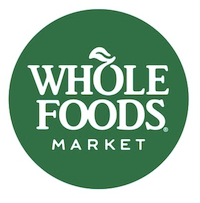
Whole Foods as a bustling food court of artisanal brands, tasting stations with smiling t-shirt clad brand ambassadors offering morsels of everything from cricket flour-made snacks to drinkable soups has become a piece of Americana.
Unfortunately, like the local Sears store or the neighborhood theatre, it may be going the way of the Dodo bird.
Yesterday’s feature in the Wall Street Journal gave us a glimpse of a challenged, misbranded future that may be coming early next year.
The article spoke directly to the disappointment in growth numbers from price decreases and the changing face of the brand as it turns away from its core positioning as a platform for artisanal local food innovation that has defined it for over a decade.
Behind the scenes, this is what made Whole Foods tick so personally and loudly. It was the essence of its allure to the wellness conscious shopper and generations of food entrepreneurs.
From low-cost loan programs supporting innovative brands in the early days, to the unique local first approach, Whole Foods was early on driven by a forager model. Business development outreach to local and regional brands easing the way for smaller companies to find visibility next to national brands on its shelves.
Making the offerings in NY different from Seattle or Nashville. Local flavor on a national platform piecing together a brand magnet that captured my generation of shoppers.
On the artisanal side, Whole Foods was the chosen launch pad, bringing food innovation to the market as local market test cases. And crafting brand loyalty in a brilliant way with New Yorkers supporting their Brooklyn artisans and locals in Austin, their hot sauce manufacturer.
Certainly, the cost of supporting a brand through this high-touch model was real, but it netted out on both side as it built customer and vendor loyalty in quite amazing ways.
At 5am on a weekday, the loading docks were a combo of tracker trailers from huge distributors and sleepy people in their SUVs schlepping ice packed insulated crates of product in a few cases at a time and stocking their shelves with loving care.
This spawned as well, a national ecosystem of shared kitchens, boutique distributors, merchandising organizations and an entire community of small companies working from the farms to the stores, sharing a conviviality that extended to the folks on the loading docks to the personalities of the buyers on the floor.
Yesterday’s piece in the WSJ hinted towards the dismantling of this community, announcing that in the new year vendor demoes (aka tasting stations) would be gone as well as all merchandising would be handled in store. And by default, a greatly reduced number of local brands in the stores paying for support services.
This will result in both less support staff for Whole Foods certainly, a different on-floor structure but the end of the store as a platform for bringing local and artisanal product to market.
To be clear, this has been coming for the last 2-3 years as the company shuffled unsuccessfully for more profitable models. Smaller brands started moving to other chains to find distribution. In-house 365 brands and cobranded solutions replaced segment after segment to drive higher margins and stronger affinity to nationally distributable products.
Here’s the rub.
Whole Foods has a broken bottom line and obviously needs to make some hard decisions.
But, this decision feels like one made by the financial arm of grocery chain out of fear, not one made by a well-capitalized highly innovative parent company that is cognizant of cost reductions but fully aware of the value of the brand itself as the key for customer acquisition and loyalty.
I view Whole Foods as a Petri dish for a new way of defining grocery, not by following in the footsteps of the big chains and just slashing costs. But by creatively rethinking the model and the brand, not emasculating it.
Grocery is all about thin margins and product shrinkage.
Why? Because organic produce, innovative ingredients and healthy food are by definition expensive and perishable. And for the most part, better for it and the lure for customers. That’s the built-in conundrum of the model.
Obviously, it makes sense to figure out how to grow and distribute organic at economies of scale that bring it to the consumer at better prices with higher margins.
But I also believe that healthy, innovative and local is the core of their brand and the largest and smartest savings come less at the management of the artisanal brands and more at the infrastructure of distribution itself.
That squeezing the producers in the supply chain is not innovation, simply line item cutting in the face of profitability without much imagination. You can easily squash the smallest vendors for the least gain, while rethinking distribution as currently structure for over a century is where the true game changer could—I think must—happen.
I expected more creativity honestly from Amazon. They are simply smarter than this.
I expected both innovation to do things differently and a respect for the brand itself as something that made thousands of us to shop at Whole Foods regardless of price. We are the base to be leveraged, not alienated.
There is very much a balance possible here through innovation though not by becoming the very thing that Whole Foods was founded to replace.
I am still pragmatically optimistic that visionary M & A people at Amazon will see that the only solution here is a new one. A new way.
We don’t need another Albertsons, we need a smarter and more pragmatic Whole Foods that can redefine the supply chain to benefit of us all.
I sent this post to [email protected] so we shall see if anyone is listening.
Hi! I am a robot. I just upvoted you! I found similar content that readers might be interested in:
https://medium.com/@awaldstein/amazons-strategic-misstep-with-whole-foods-5b125c4c53a2
Downvoting a post can decrease pending rewards and make it less visible. Common reasons:
Submit